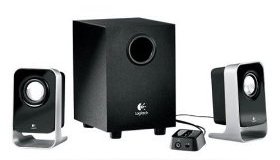I upgraded to the brand new version of Ubuntu, Hardy Heron, on Saturday. I didn’t upgrade in the usual sense – I actually took a backup of my data and did a complete reinstall. This seemed like a sensible decision, as it’s now three years since I installed Ubuntu, and my hard drive probably bore the evidence of my learning curve, much as a learner driver tends to cause a degree of damage to the clutch of the car that they learn to drive in.
Why I did a full reinstallation
There were a couple of other advantages to doing a complete reinstallation. Firstly, it allowed me to set up my partition table so that `/home` is stored on a separate partition. You can also do this with an existing installation, but it’s easier when you’re doing a fresh one because resizing partitions is quite slow, whereas deleting and recreating them is very quick. Having `/home` on a separate partition then makes it even easier to do complete reinstallations in the future.
Secondly, upgrading Ubuntu tends to take quite a few hours. If you have changed any configuration files (eg `smb.conf`) then you will be prompted whether you want to keep your version, discard all changes, or attempt to merge the two. However, these prompts come up while you are performing the upgrade, rather than all in one batch at the start or end, so you have to sit in front of the computer (or, at least, keep checking up on it) during the upgrade process. However, installing Ubuntu from scratch is remarkably fast. You download the ISO image (700MB), burn it to a CD, and then run the installation from that disc. The installation took about 15 minutes on my computer, and after filling in the initial configuration screens, the main portion of the installation program ran without needing my interference.
The downside
The downside to performing a complete reinstallation is that you lose all of your customisations. Application-specific settings are stored in your home folder, so those are easy to import. For most applications, I am taking this opportunity to start with a fresh profile – exceptions so far being Mozilla Thunderbird (with its hundreds of megabytes of archived mail) and Deluge, my Bit Torrent client (with all my RSS feeds). However, you will invariably lose system-wide settings.
But this isn’t necessarily a bad thing. When I first installed Ubuntu, I had to go through a number of hoops to enable the thumb-button on my mouse, and the multimedia keys on my keyboard. It seems that sometime in the last three years, this functionality was neatly integrated into the base distribution, and I discovered to my joy when reinstalling that it was all detected and configured in a totally fuss-free fashion. So instead of having all sorts of redundant hacks and tweaks to make my hardware work, it should now be handled in the simplest and most reliable way possible. It also gives me the opportunity to see how far things have come.
Configuration files
The only configuration file that I’ve had to modify has been `xorg.conf` (of course). For some reason, Ubuntu still can’t detect my 19″ Sony SDM-HS95P (I blame it on a poorly-supported video chipset) so it sets me up at 800×600. I expected nothing less, which is why I held onto a backup of my `xorg.conf` so that I could paste in the relevant lines. Maybe `displayconfig-gtk` could have done the job, but I didn’t bother to check. Incidentally, as far as I can see, there’s no way to run `displayconfig-gtk` from the Main Menu (unless you use the Menu Editor to make it visible in the “Other” submenu as “Screen and Graphics”).
Any trouble?
When I tried setting a static IP, the network connection disappeared altogether. This was fixed by manually restarting the networking daemon with `sudo /etc/init.d/networking restart` but I felt that this should have been done automatically.
I also found that trying to set a workgroup caused the `/etc/hosts` file to be broken in such a way that sudo would no longer work (I’d get the error `unable to resolve host`). Here’s a thread on ubuntuforums.org that contains a solution, but for now I have just left the workgroup blank.
Improvements?
I have to admit, there aren’t any particular features in the new version of Ubuntu that I’ve been waiting for with baited breath (except perhaps Firefox 3), but I like to be using the latest and most well-supported version (assuming that it’s stable, of course). I also think that the new Wubi program (which allows you to install Ubuntu within your Windows partition) is an incredibly cool concept, though it doesn’t affect me personally.
